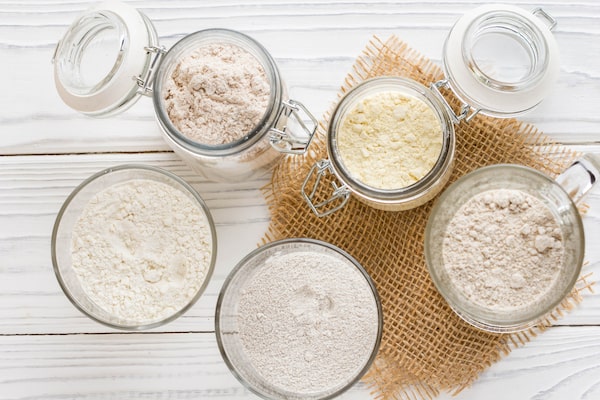
Maria_Lapina/iStockPhoto / Getty Images
There is a world of alternatives to regular wheat flours. Whether you follow a gluten-free diet or just want to experiment with different textures, these are a boon.
These are the most popular alternative flours, along with some uses for them.
Almond flour is a natural substitute for wheat flour in baking, although it is higher in calories and fat. It makes an excellent flaky dough and is favoured in French pastry, combined with regular flour, to make delicate tart crusts. Substitute one for one with flour, but I find I need an added egg yolk to help it bind. Almond flour lightly toasted in a skillet makes a good substitute for breadcrumbs.
Cooking 101: Lucy Waverman decodes cooking techniques everyone can master
Buckwheat, despite its name, has no wheat in it. It has an earthy taste and works best in pancakes, as the perfect match for caviar or smoked salmon. It is good for quick breads, too. It has a high mineral component and lots of fibre. Look for certified organic to make sure there is no cross contamination (with other grains). Mix it with other flours, such as brown rice, as it tends to be crumbly on its own.
Spelt is an ancient grain that contains some gluten, but people with gluten sensitivity may tolerate it. Spelt pasta is very tasty.
Barley flour is a kind of gray in colour so it does not bake into an attractive loaf. I mix it with other grains, or tapioca starch to make pancakes or quick breads.
Brown and white rice flours are interchangeable in recipes but have slightly different tastes. Brown rice flour tastes a little nuttier. They are both good for thickening soups and sauces and for making crackers. They need to be combined with other flours to work well in baking cakes and cookies.
Chickpea flour is a staple in Indian cooking, where it is used to make pakoras and pancakes, as well as other dishes. It is excellent for baking because it holds air bubbles and moisture. It is also the basis of the tasty French chickpea pancake called socca.
Oat flour is delicious mixed with other flours for bread, and it can be used on its own to make oatmeal cookies and biscuits. Of all the alternative flours, oat is one of the easiest to make yourself; simply grind down whole oats in a high-powered blender, such as a Vitamix. All of these flours can be made the same way if you are in a pinch. If you’re concerned about cross-contamination, look for oats that are labelled gluten-free.
There are numerous brands of gluten-free flour mixes available. Cup4Cup was developed by chef Thomas Keller of French Laundry fame. As the number of people asking for gluten-free alternatives grew, he spent months developing his own mix and produces both whole wheat and a multipurpose. I find the multipurpose excellent for all baking, subbing it in for the same amount as regular flour. It’s expensive, but worth it. It does contain some milk powder for those who avoid dairy (the whole wheat version does not). Bob’s Red Mill gluten-free flour makes good cakes and cookies as well as an okay bread.
Need some advice about kitchen life and entertaining? Send your questions to lwaverman@globeandmail.com.
Plan your weekend with our Good Taste newsletter, offering wine advice and reviews, recipes, restaurant news and more. Sign up today.